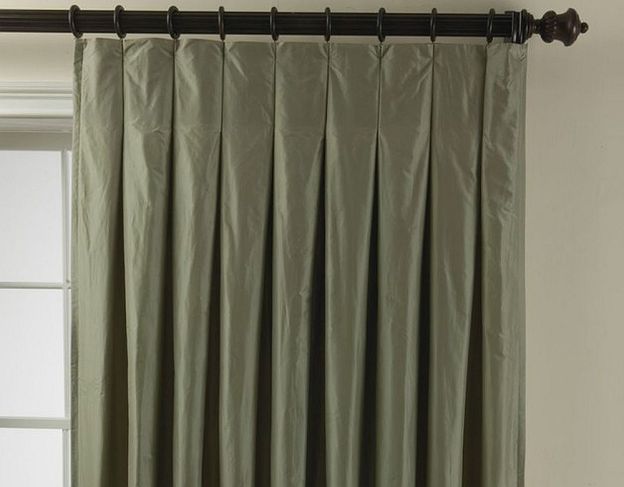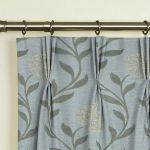So far, these blogs have covered applications for curtains of all kinds, from sheers to long drop curtains, as well as looking at some of the functional benefits of curtains, including the energy saving and light reducing features of blockout curtains. A variety of fixtures, fittings and accessories, which have the power to transform a drape in terms of hang and overall appearance, have also come under the microscope.
For readers still scoping out their options for the ultimate drape, it’s probably worth taking a quick look at three popular curtain styles: inverted pleat curtains, pencil pleat curtains and pinch pleat curtains.
The inverted pleat curtain (pictured top) is a great pleat style, created when two folds of fabric are folded toward each other in opposite directions to create the pleat. The result is an almost architectural look; a clean, flat surface along the top of the drape, from which the pleats descend in an ordered, visually pleasing way.
The pencil pleat curtain derives its name from its resemblance to a row of pencils laid side by side. Pencil pleat consists of tightly gathered folds that retain their shape by a cord being pulled on the heading tape. The cord can be adjusted slightly to the width of the window. Pencil pleat curtain headings can be used with either curtain poles or tracks, ensuring a good fit for any window.
Pinch pleat curtains (pictured bottom) are so called because the top of the curtain is literally pinched together. The pinched pleats are spaced evenly apart, and weighted at the bottom of the seams, resulting in a tailored look at the top. As the fabric drops, the pleats determine their fullness, creating a smooth, even hang. A pinch pleated drape is hung using metal hooks pierced into the fabric at the top of the back of the curtain panel next to each pleat.
While there are numerous options for drapes on the market, these three remain among the most classic and popular. Whichever one you choose, bear in mind that the kind of ready-made curtains you decide to purchase may well depend on a number of factors, including budget, location/orientation and the style of the room being furnished.
For example, the clean lines of the inverted pleat curtain give a great masculine look for a man’s office or dressing room, although the pleat is also loved by women who are after a contemporary look. This style works better for plain fabrics or those with a small, subtle print design; larger repeat patterns tend to be hard to work into the structure of the pleat, although if you can pull this off, the results are amazing. The pinch pleat curtain is a great addition to any traditional or elegant styled space such as a lounge or master bedroom, since it offers a dramatic, yet timeless look. As for pencil pleat curtains, their neat, ordered appearance make them ideal for dining rooms, studies or reading rooms; although of course they’re style that’s applicable almost anywhere.






